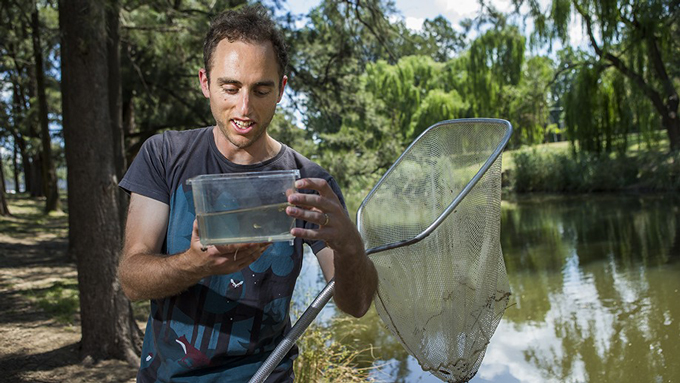Studying crab sex with robotic claw leads to PhD
Andrew Kahn knows just what gets female crabs interested, thanks to a unique blend of biology and engineering.
Andrew, who had his PhD from the Research School of Biology conferred, spent time in Darwin waving a mechanical claw at female fiddler crabs and discovered that size does matter; but that changes with the tides.
"At the beginning of the mating season females preferred males with the largest claws, but a few days later they were tending to go for smaller males," Andrew said.
"This was a bit of a surprise - we think it's to do with burrow size and the development rate of their eggs."
Andrew's PhD on watery wildlife also included mathematical modelling of why fish dads do the caring instead of mums (to ensure that no other males attempt to sneak substitute sperm into their ocean nest) and how the guppy-like gambusia give birth to more males in Spring and more daughters in Autumn.
Because gambusia are found in the streams and lakes of Canberra, Andrew did field work within walking distance of the Research School of Biology.
"I would come and check my email, take my net down to Sullivan's Creek and catch some fish, and have the data entered by the afternoon," he said.
"Canberra is great because there are so many great field sites in such a small area."
After finishing his PhD, Andrew has decided to share his passion for science with the next generation as a high school teacher.
"I feel I can have a big impact by promoting scientific understanding and reasoning at that level. I get a real buzz out of it, but it's emotionally draining."
Andrew has already used his connections at ANU to get Nobel Laureate Professor Brian Schmidt to talk to Year 10 students about astronomy.
"It's great for students to see that researchers are working on this right now, and there is a human face to science," he said.

